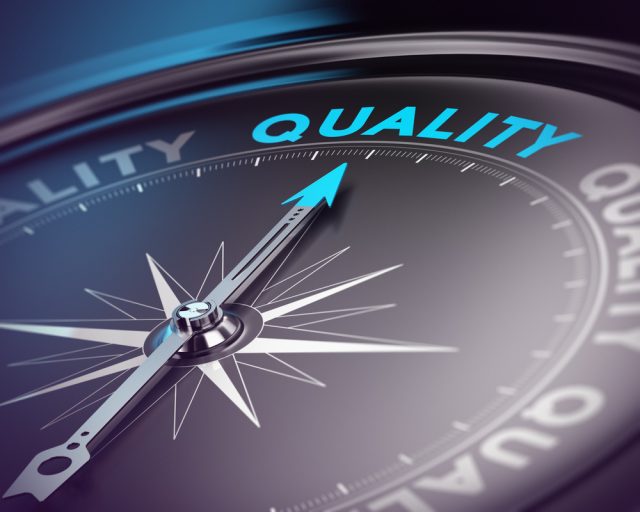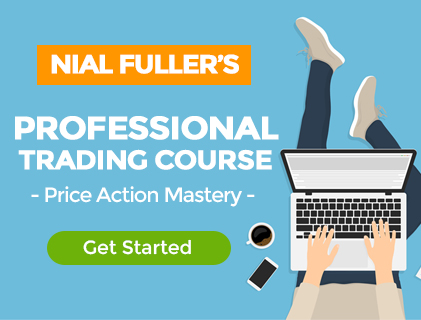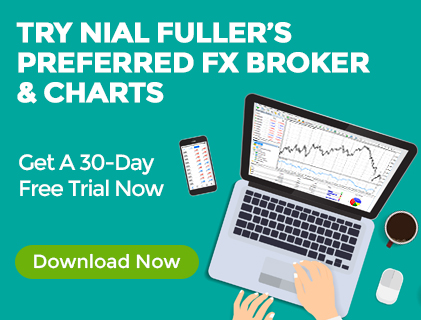Why The Quality Of Your Trades Matters Far More Than The Quantity » Learn To Trade The Market
 Most traders simply want to trade. They fear missing out on the next big move and they forget that the market is still going to be there tomorrow and the next day and 10, 20, 50 years into the future. Everything in the market repeats and that means there will be another opportunity right around the corner, so stop worrying.
Most traders simply want to trade. They fear missing out on the next big move and they forget that the market is still going to be there tomorrow and the next day and 10, 20, 50 years into the future. Everything in the market repeats and that means there will be another opportunity right around the corner, so stop worrying.
Today is not the last day you will have to trade and yet many people trade and think like it is! Over-trading is the number one reason that most traders don’t succeed; it’s a ‘cancer’ to your trading account and to your dreams.
What would be considering “over-trading”?
If you find you are almost always in a trade, you’re over-trading. If you find that you are preoccupied with the markets and your trades, you’re over-trading or you’re about to over-trade. If you are in more than one trade at a time you’re probably over-trading unless you have carefully divided up your overall 1R risk amongst all the trades.
There are many other examples of over-trading, but the basic fact of the matter is that you know if you’re trading too much because you won’t be able to sleep at night and you will be hemorrhaging money.
I personally only trade 1 to 6 times per month approximately, and I very carefully select my trades and filter out the signals I don’t like.
Here’s what over-trading does to your trading results and account…
Too many Trades dilutes your edge
The more trades you take, the more diluted your trading edge becomes. A trading edge increases your chances of success, but the simple fact is, there are only going to be so many high-probability trade signals each week, month, year etc. no matter what your edge is.
So, once you start breaking away from your trading edge and start taking lower-quality trades that don’t meet your criteria, you start lowering your chances of success. You are basically diluting your trading edge down to where eventually it will be no better than random or worse.
- Market Noise vs Quality Trades – There is market noise, and then there are actual high-probability price events, you must know the difference. I wrote an article that touches on this titled how to trade sideways markets and I suggest you check it out to learn more and see some chart examples. The point here is that when you don’t know the difference between market noise and actual price action signals worth risking money on, you will naturally end up taking trades that are just noise and not actual signals, further diluting any edge you may have. The verdict is clear: Before you start risking your hard-earned money in the markets, make damn sure you know EXACTLY what your trading edge looks like and how to trade it so that you don’t ACCIDENTALLY end up over-trading!
The spread and commissions eat into your profits
How do you think casinos make sooooo much money? Frequency. The high-frequency of games played means that their edge is going to play out to their advantage over and over again. The house always wins. In trading, the broker is the house, and they always win because not only are there a lot of people trading but probably 90% of them are trading WAY TOO MUCH. Hence, your only REAL “edge” as a retail trader or investor is to simply TRADE LESS!
Consider this: Every 100 trades you give back at least 100 to 150 pips equivalent in spread or commissions, so the more you trade the more you cost yourself simply due to the “churn” of your account.
You want to avoid trading like you’re the casino player and premeditate, filter, and carefully select your trades. In a nutshell, to maintain your edge you want to avoid giving the market or broker the spread constantly.
Doing too much of anything is usually a bad idea
If you take a look at most endeavors, trading included, often times doing them too much or thinking too much / worrying too much about XYZ endeavor has a direct and negative relationship to how well you do at that thing.
For example: Drinking too much coke, eating too much Mcdonald’s, even working out too much or drinking too much water – all of these things can be bad for you. Being too worried about your significant other will end up pushing them away as it becomes unattractive and “needy”. One thing is true – too much of anything can hurt or even kill you and too many trades WILL kill your trading account for sure!
- Your brain is wired to get addicted…
Drugs, sugar, video games, gambling, blue light from your smartphone, trading, what do all of these things have in common? They can all become insanely, dangerously addictive.
Our brains are wired and designed to become addicted to things, this is an evolutionary trait that served us well thousands of years ago as hunter-gatherers, but in modern-day society with all of its unhealthy vices and temptations, it tends to work against us and in certain cases, even kills us.
Our brains work on a reward system; when something feels good we get a little “shot” of “feel-good chemicals” such as dopamine and others. Hence, we become addicted to whatever gave us that dopamine rush, whether it was bad or good for us. For example, drugs are obviously bad for you but they can make you feel really good and we can become addicted to that good feeling even though we know the dire consequences it brings. Certain drugs like heroin are extremely addictive and can kill you very quickly, so they are especially dangerous. On the contrary, exercise also releases “feel-good” chemicals and you can become addicted to that feeling and you will be more likely to continue working out, obviously that is not a bad thing.
Knowing this basic information about how your brain works, it should be obvious that you need to be very careful and train yourself to get addicted to positive thoughts and processes so that you don’t become addicted to the negative ones.
When it comes to trading, we have a laptop in front of us with flashing colors and prices moving up or down that we can use to enter trades at the push of a button. Once we do that and hit a few winners, the brain says “hey that feels pretty damn good, do it again”, and so the trading addiction begins, if we aren’t careful.
If you do not create a trading plan where you plan out your trading edge and how you will behave in the market, you will naturally end up over-trading as you will get addicted to the feeling of “chasing” that winner. If you do not objectively plan our your trades in the beginning of your career, you will end up losing a lot of money due to trading addiction before you finally learn the lesson enough times that you either quit or have no money or desire left to trade with.
A Cure For Over-trading
I’ve been trading the markets for about 18 years, teaching traders for over half that time, and without a doubt I have learned every lesson there is to learn in the markets many times over. So, the plan I am going to lay out for you below is born out of my experience and it is my opinion that if you follow it, you will be “cured” of the over-trading “cancer” that is probably destroying your trading account right now.
- Set a max 10 to 12 trades a month, ideally less.
You must have some rigid rules built into your trading plan. Think of it like this: some of your trading strategy is rigid and then within that rigid structure there is some flexibility such as how much you risk, how you enter, where you place your stop loss, etc. But, when it comes to trade frequency, it really is necessary to say, “I am not going to take more than 10 trades a month” or 5 trades or whatever. Ideally, I would not trade more than 5 – 7 times a month. If you’re trading more than 10 times a month you’re probably over-trading.
- Wait for setups matching your plan and apply a filter…
When we talk about “applying a filter”, I am talking about a set of criteria that you use to check if a trade is worth taking or not. I like to use a T.L.S. filter wherein I am checking for a trade that has multiple pieces of confluence in its favor, at least 2 of 3: Trend, Level, Signal, etc.
Your goal is to trade like a sniper and wait patiently like a crocodile hunting its prey. You are not going to go after “every” target or the prey that looks strong and difficult to “kill”. Instead, you want to improve your odds of success by saving your “ammo” (trading capital) for the weaker / easier to get prey / trades. You only have so much money to risk just like a sniper only has so many bullets and a crocodile only has so much energy. Use it wisely or you’ll run out / blow out your account.
- Set and forget approach…
One of the big reasons traders trade too much is because they don’t give their trades enough time to play out and then they jump into another trade right away. Remember, good trades take time to play out and if you want to catch big market moves you have to be patient, this means you also have to not trade a lot. This is one reason why you need to set and forget your trades. Doing so not only improves your chances of making big gains but prevents you from trading too much and “chasing” trades.
- Limit yourself to markets clearly moving in one direction with technical evidence
Traders often make the mistake of trading in choppy market conditions, this causes them to get in a trade and it immediately starts going against them, then they want to enter another one. The dopamine chase is underway at that point. Jumping from trade to trade is very dangerous. If you stick to markets that are clearly trending and moving in one direction aggressively, you are much less likely to over-trade.
In Closing…
One of the hard truths of trading is that there simply are not a large amount of high-probability price events in the market each week, month or year. So, it goes to reason that the more you trade the less impactful your trading edge becomes. Despite these facts, most traders continuously trade far too frequently each week, and they end up losing money.
My strategy is built on a low frequency trading approach so that I am basically trading as infrequently as possible whilst not passing up the most obvious trade setups. Obviously, there is some learning and skill required to know what constitutes the “best” and “obvious trade setups”, you aren’t going to just wake up one morning and magically know what to look for. With the help of my professional trading courses and the set and forget approach that I teach, you will begin to learn what a “high-quality” price action event looks like and you’ll learn to filter out the lower-quality ones from them. My end of day trading approach is inherently low-frequency FOR A REASON; it results in a self-fulfilling type of function that works to systematically prevent over-trading which naturally increases your chances of long-term trading success. Which is what we all want, right?
Please Leave A Comment Below With Your Thoughts On This Lesson…
If You Have Any Questions, Please Contact Me Here.





Comments are closed.